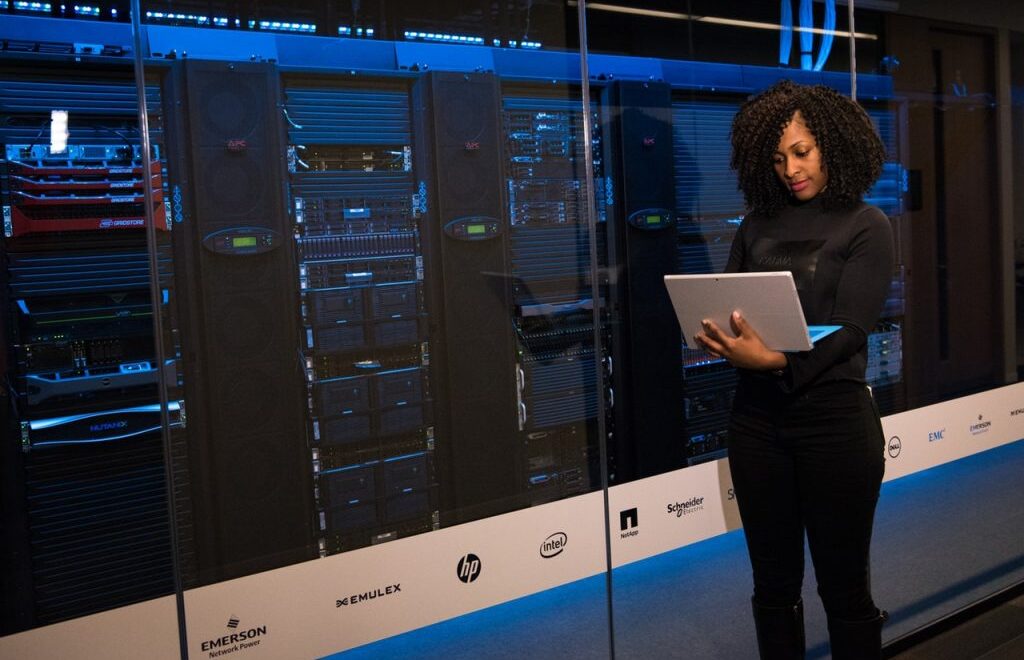In today’s world, safeguarding company data is more important than ever. With the rise of cyber threats and the increasing use of digital technologies, businesses must have strong data protection strategies in place to prevent breaches and ensure the security of sensitive information. This article delves into the essential practices and technologies that can help keep company data secure in the interconnected world.

Understanding the Threat Landscape
The first step in protecting company data is understanding the different threats that can jeopardize it. These threats include:
- Cyberattacks: These come in the form of malware, ransomware, phishing attacks, and denial-of-service attacks, all aimed at stealing or disrupting data.
- Insider Threats: Anyone with access to sensitive data may intentionally or unintentionally compromise data security.
- Physical Theft: Laptops, smartphones, and other devices containing sensitive information can be lost or stolen.
- Human Error: Mistakes such as misconfigurations, accidental deletions, or sending sensitive information to the wrong person or company can also lead to data breaches.
Implementing Robust Access Controls
Controlling access to data is essential for any data protection strategy. By ensuring that only authorized personnel can access sensitive information, businesses can significantly reduce the risk of data breaches.
- Role-Based Access Control (RBAC): Assign permissions based on an employee’s role within the organization. This limits access to data to only those who require it to perform their job functions.
- Multi-Factor Authentication (MFA): Implement MFA to add an extra layer of security. This typically involves requiring several verification methods, such as a password and a fingerprint scan, before granting access.
- Regular Audits: Conduct regular audits of access controls to ensure that permissions are up to date and that no unauthorized access has occurred.
Encrypting Sensitive Data
Encryption is a critical tool for protecting data, both at rest and in transit. By converting data into a coded format, this key step ensures that even if your sensitive data is intercepted, it cannot be read without the right decryption key.
- Data-at-Rest Encryption: Encrypt sensitive data stored on servers, databases, and other storage devices. This protects data from unauthorized access if the physical devices are compromised.
- Data-in-Transit Encryption: Use encryption protocols such as SSL/TLS to secure data transmitted over networks. This prevents eavesdropping and interception during data transfer.
Implementing Strong Passwords
Weak passwords are one of the most common vulnerabilities exploited by attackers. Implementing strong password policies helps protect against unauthorized access.
- Complex Password Requirements: Require passwords to be complex and difficult to guess, including a mix of letters, numbers, and special characters. Encourage employees to avoid using easily guessable information such as birthdays or common words.
- Regular Password Changes: Enforce regular password changes to minimize the risk of compromised passwords being used over extended periods.
- Password Managers: Encourage employees to use password managers to help generate and store strong, unique passwords for different accounts.
Ensuring Regular Software Updates and Patch Management
Outdated software may have vulnerabilities that are easily exploited by cybercriminals. Keeping software up to date is crucial for maintaining security.
- Update Automatically: Enable automatic updates for operating systems, applications, and security software to ensure that the latest patches are applied promptly.
- Manage Patches: Implement a patch management process to regularly review and apply updates to all software and systems used by the organization.
Leveraging Digital Workspaces
Digital workspaces offer a transformative approach to integrating various tools and technologies, creating a unified and secure environment for remote work. Find the right digital workspace for your business at claromentis.com.
- Centralized Access Control: Digital workspaces provide a centralized platform where employees can securely access all necessary applications, tools, and data. This reduces the complexity of managing multiple systems and enhances security by providing a single point of control.
- Integrated Security Features: Many digital workspaces come with built-in security features, including single sign-on (SSO), multi-factor authentication (MFA), and data encryption. These features ensure that only authorized users can access sensitive information.
- Real-Time Collaboration: Digital workspaces support real-time collaboration on documents, projects, and communications. Integrated tools for file sharing, messaging, and video conferencing facilitate seamless interaction while maintaining robust security protocols.
- Monitoring and Compliance: These platforms often include monitoring and compliance tools that track user activity, data access, and policy adherence. This helps organizations identify potential security issues and ensure compliance with regulatory requirements.
Conclusion
In a connected world, protecting company data is more challenging yet more critical than ever. Organizations can significantly enhance their data security posture by thoroughly understanding the threat landscape and implementing data protection strategies with robust access controls, encryption, strong password policies, regular software updates, employee education, advanced security technologies, and a comprehensive data breach response plan. Keeping company data safe is an ongoing effort that requires vigilance, proactive measures, and a commitment to continuous improvement.







